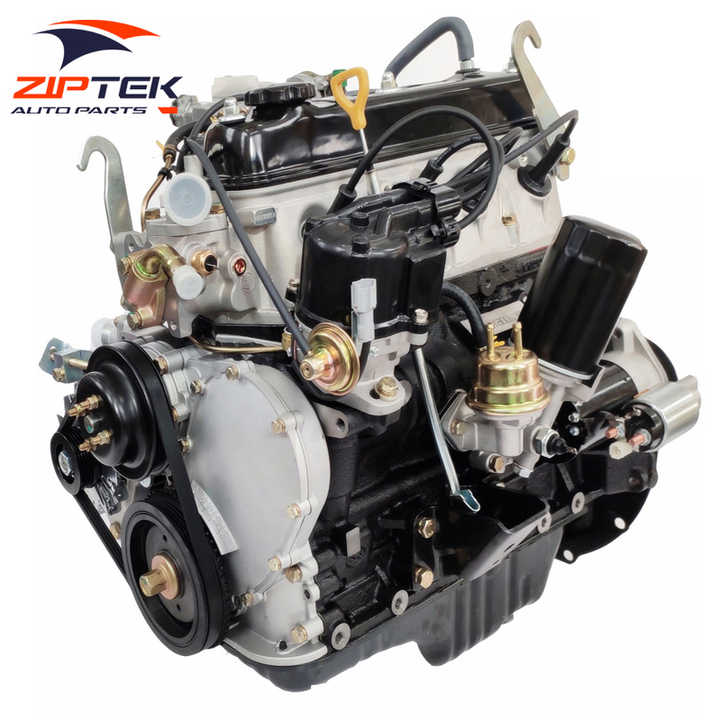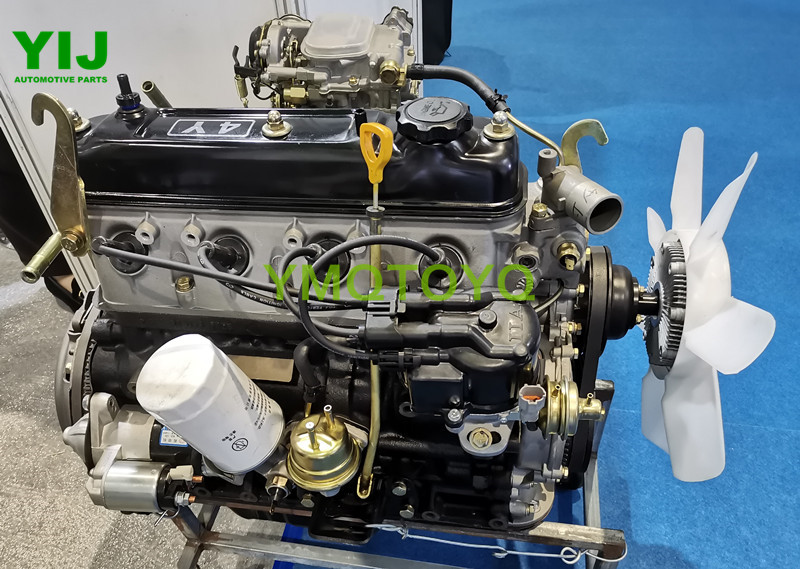How to Maximize Fuel Economy with Your 4Y Engine
How to Maximize Fuel Economy with Your 4Y Engine
Blog Article
Why the Engine Is the most effective Option for Performance and Performance in Your Auto
The engine continues to be an essential part in automotive style, largely because of its significant influence on both efficiency and efficiency. As improvements in modern technology enable smaller sized engines to provide remarkable power while enhancing gas economic situation, the combination of attributes such as turbocharging and hybrid systems becomes progressively important. These advancements not just improve driving experience however also address environmental worries. However, the question occurs: exactly how do these aspects coalesce to redefine our understanding of auto performance? Discovering this equilibrium reveals much deeper understandings into the future of engine design.
Comprehending Engine Kind
Recognizing the different kinds of engines is critical for optimizing performance and efficiency in vehicle layout. The main engine types consist of internal combustion engines (ICE), electrical engines, and hybrid systems, each offering distinctive advantages and limitations.
Inner combustion engines, which can be further categorized into gas and diesel variations, depend on the combustion of fuel to generate power. Fuel engines commonly supply greater RPMs and much better acceleration, while diesel motor are recognized for their torque and fuel efficiency, making them excellent for sturdy applications.
Electric engines, on the other hand, utilize electrical motors powered by batteries or gas cells. They use instant torque shipment, leading to smooth acceleration and reduced exhausts. The effectiveness of electrical engines is significantly more than that of ICEs, making them a prominent choice for eco-conscious consumers.
Crossbreed systems incorporate both inner combustion and electric engines, leveraging the strengths of both innovations. They enhance fuel intake by utilizing electrical power at reduced speeds and switching over to gasoline or diesel for higher speeds or much heavier loads.
Choosing the best engine type is crucial for attaining wanted performance metrics and ecological sustainability in modern-day automotive engineering.
The Effect of Engine Size
Engine size frequently plays a critical role in figuring out a car's efficiency and effectiveness. Normally measured in liters or cubic centimeters, engine dimension straight affects the power outcome and torque characteristics of a car.
Nevertheless, increased engine size usually associates with decreased fuel effectiveness. Larger engines consume even more fuel, bring about higher emissions and functional expenses. Suppliers have to balance the demand for power with the requirement for gas economy. Smaller engines can deliver appropriate performance for everyday driving while promoting much better performance, making them a preferred option in compact and mid-size lorries.
Additionally, advancements in engine design, such as turbocharging and direct fuel shot, enable smaller sized engines to attain power degrees equivalent to their larger counterparts. This pattern highlights the value of not entirely concentrating on engine dimension yet also taking into consideration total car style and modern technology (4y engine). Eventually, the influence of engine size on performance and effectiveness emphasizes the demand for customers to evaluate their specific driving demands and preferences when choosing a vehicle
Advanced Engine Technologies
Developments in engine innovations have actually considerably reshaped the landscape of auto performance and performance, structure upon the fundamental principles developed by engine dimension. Especially, innovations such as turbocharging and straight fuel shot have actually allowed smaller engines to deliver power degrees formerly related to larger equivalents. Turbochargers compress air getting in the engine, permitting raised power output without an equivalent rise in engine size, while straight injection maximizes gas delivery, boosting combustion effectiveness.
In addition, variable shutoff timing systems have become an important technology, permitting engines to adjust shutoff operation based on driving problems. This adaptability enhances both performance throughout velocity and fuel effectiveness throughout cruising. Crossbreed and electric engine technologies further illustrate the shift in automobile layout, integrating traditional interior burning engines with electric 4y engine motors to make the most of performance while reducing exhausts.
Moreover, advancements in materials science have brought about lighter, extra long lasting engine elements, additionally boosting performance and long life. The assimilation of advanced electronic devices and engine control units additionally enables real-time modifications, making sure optimum performance across numerous problems. Collectively, these sophisticated engine modern technologies not just enhance vehicle performance however likewise add to an extra lasting auto future, showing the ongoing evolution of engine layout.
Balancing Power and Efficiency
Striking an equilibrium in between power and effectiveness is important in contemporary automotive style as producers look for to meet significantly strict emissions guidelines while pleasing customer demand for performance (4y engine). The obstacle depends on maximizing engine qualities to deliver robust power outcome without compromising fuel economic situation
To accomplish this equilibrium, designers use numerous methods, such as turbocharging, which enhances engine power by requiring in more air, enabling for a smaller sized engine displacement that enhances fuel effectiveness. Variable valve timing modern technologies likewise play a significant role, allowing engines to adjust their efficiency characteristics based on driving conditions, consequently enhancing both power and effectiveness.
Additionally, improvements in products and making methods have actually brought about lighter engine elements, which lower general vehicle weight and boost fuel effectiveness without endangering power. Crossbreed innovations have also arised as a feasible service, integrating typical interior combustion engines with electrical powertrains to offer an increase in performance while maintaining reduced discharges.

Future Fads in Engine Style

Furthermore, the development of sophisticated materials, such as high-strength alloys and light-weight compounds, is established to change engine parts. These products not only lower weight yet likewise improve thermal efficiency, thereby maximizing efficiency. Additionally, suppliers are checking out variable compression proportions, permitting engines to adjust to different driving conditions, boosting both power outcome and gas economy.
Even more, the rise of synthetic knowledge and artificial intelligence in engine design is making it possible for predictive upkeep and real-time performance optimization. This technology can bring about engines that self-adjust for optimal efficiency based upon driving patterns.

Final Thought
In conclusion, the engine offers as a crucial element in accomplishing optimum performance and efficiency in modern automobiles. The interaction between engine dimension and design proceeds to evolve, driving developments that stabilize electrifying performance with ecological sustainability.
In addition, developments in engine design, such as turbocharging and direct gas injection, enable smaller engines to accomplish power levels equivalent to their bigger equivalents.Developments in engine modern technologies have actually significantly improved the landscape of vehicle efficiency and effectiveness, structure upon the foundational concepts developed by engine dimension. Turbochargers compress air going into the engine, permitting for boosted power output without a learn the facts here now corresponding boost in engine size, while direct shot optimizes gas delivery, enhancing burning performance.
Hybrid and electrical engine technologies further illustrate the change in automotive layout, combining traditional internal burning engines with electrical motors to make best use of efficiency while minimizing emissions.
Jointly, these sophisticated engine innovations not only enhance automobile efficiency but likewise contribute to an extra sustainable automobile future, demonstrating the ongoing advancement of engine style. (4y engine)
Report this page